Abstract
1. Visual resolving power is known to be poorer for objects oriented obliquely as compared with horizontal and vertical orientations. Experiments were designed to evaluate the optical and neurophysiological factors involved.
2. Gratings with a sinusoidal light distribution were generated on the face of an oscilloscope. Spatial frequency and contrast could be varied while keeping the mean luminance of the grating constant.
3. Using a homatropinized eye with an artificial pupil and carefully corrected refraction, high resolution in the vertical and horizontal meridians as compared with the oblique meridians was found for gratings ranging in spatial frequency from 1 to 35 c/deg.
4. It is concluded from the similar behaviour of low and high frequency gratings that neither focus errors nor optical aniseikonia can account for these findings.
5. Additional proof that optical factors cannot significantly account for these preferred directions of resolution was obtained by forming interference fringes directly on the retina using a neon—helium laser as a coherent light source.
6. Similar orientational changes in resolution were found by by-passing the dioptrics with interference fringes. It is concluded that the effect is due to some orientational inequality in the visual nervous system.
Full text
PDF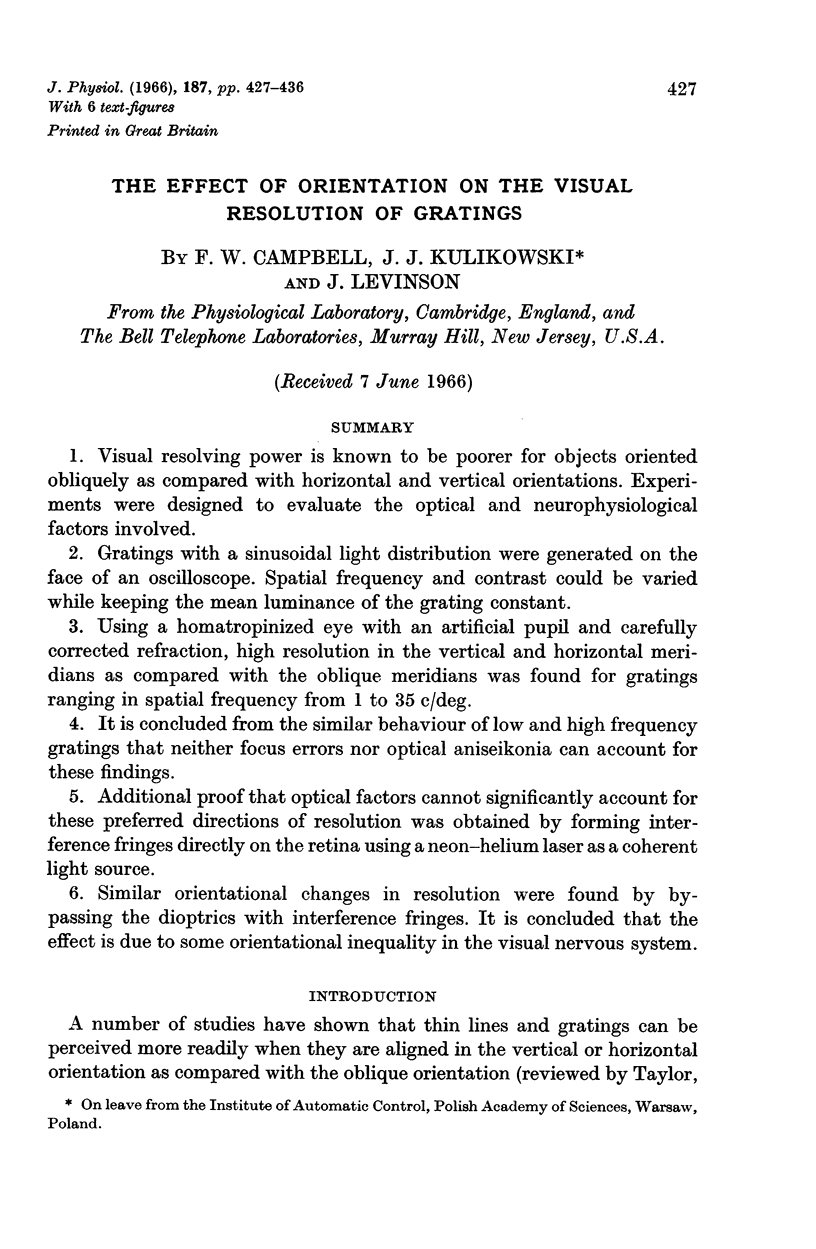
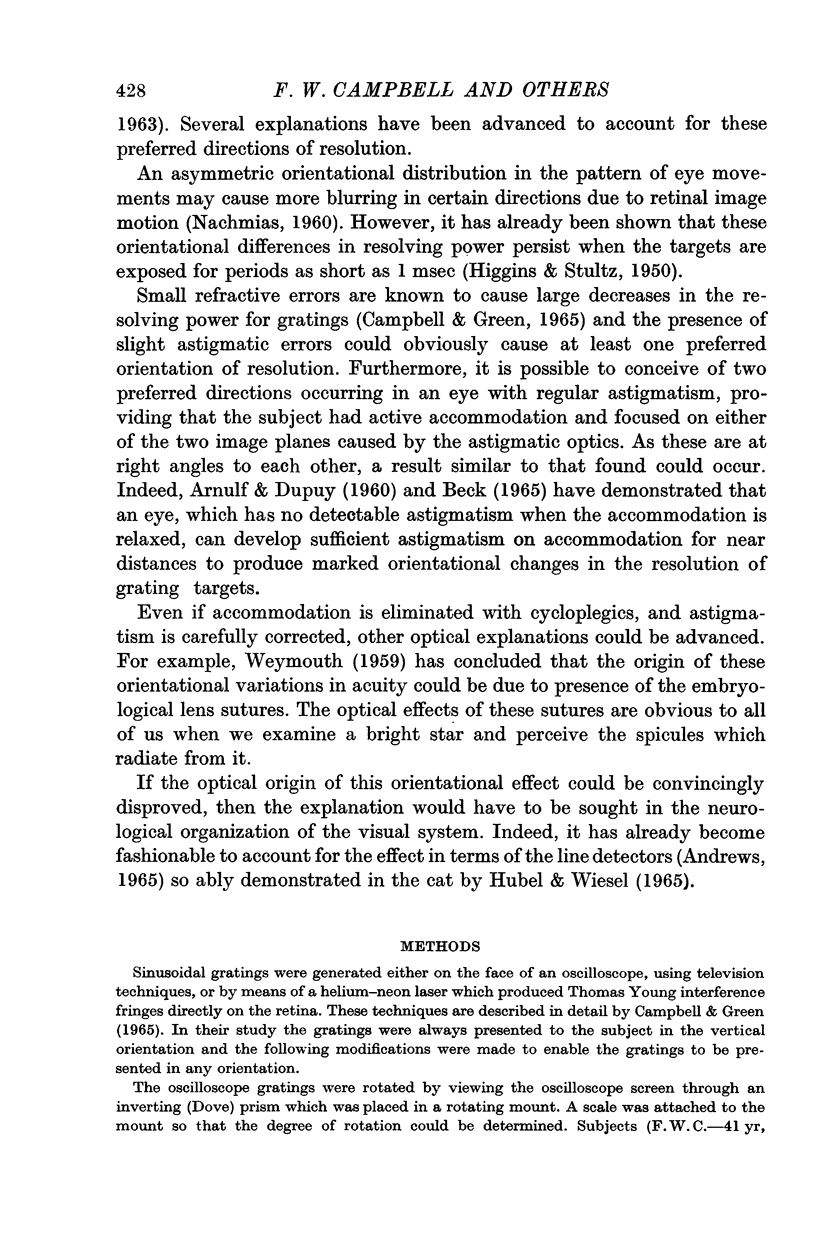
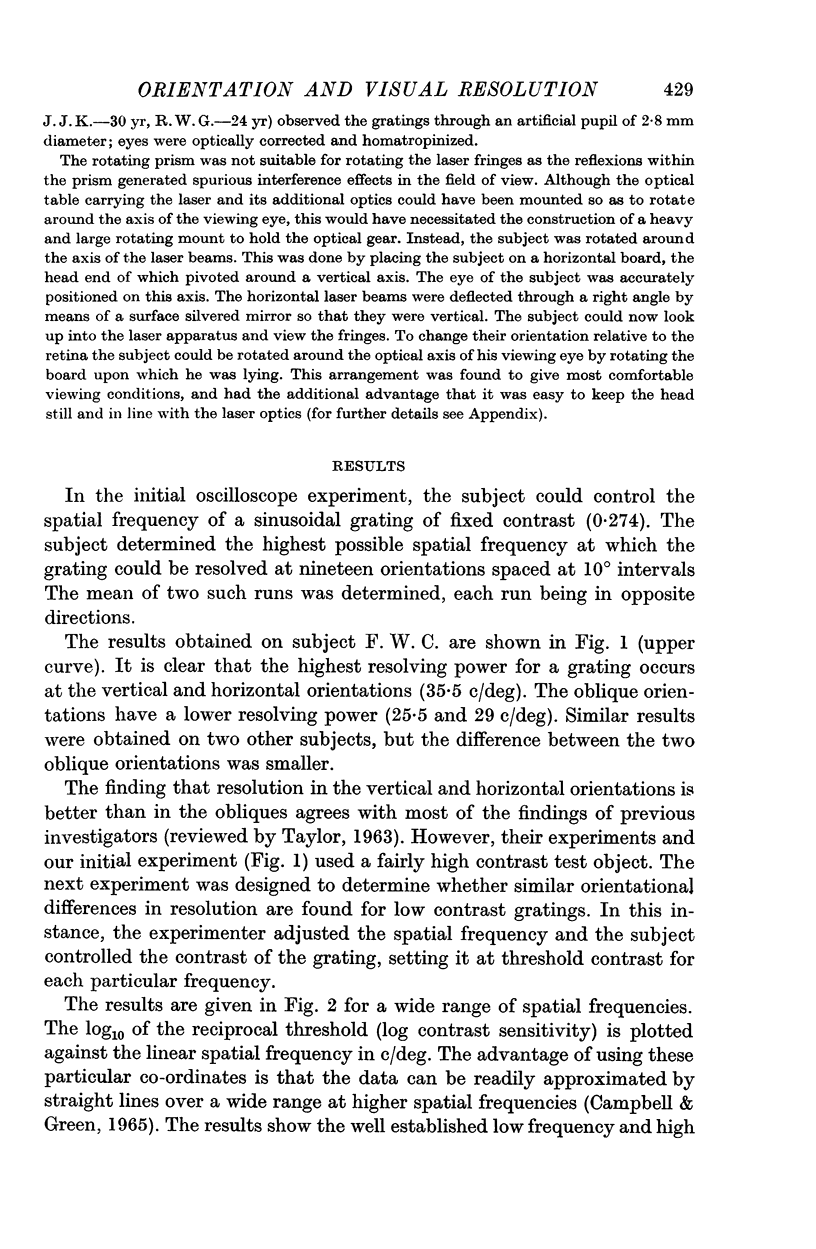
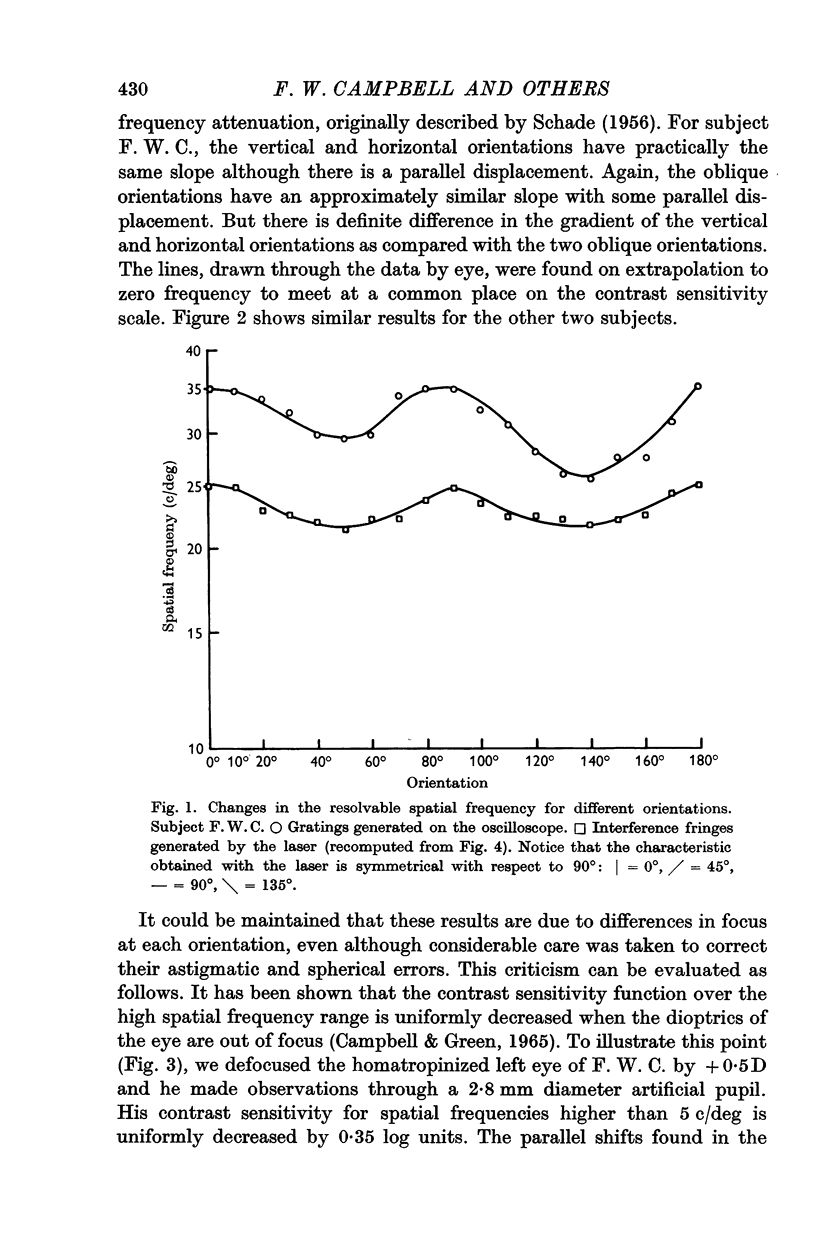
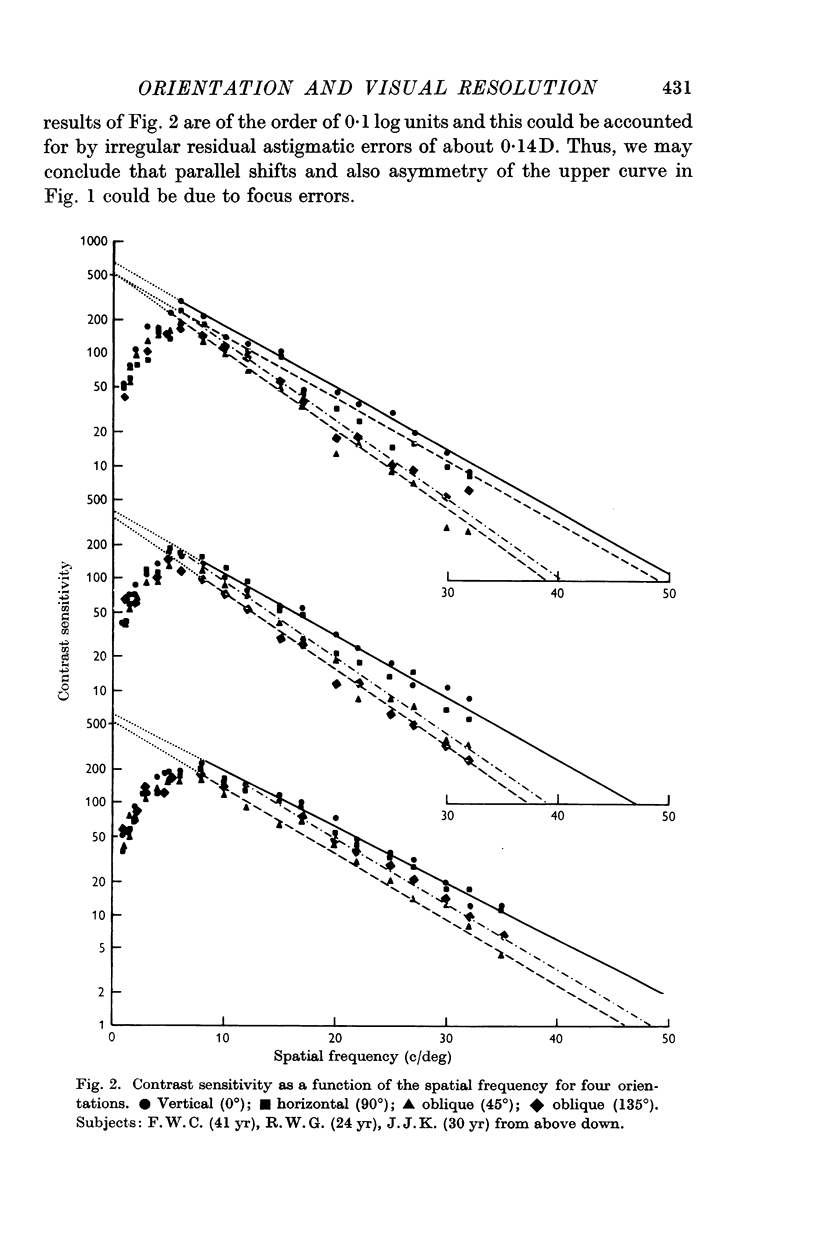
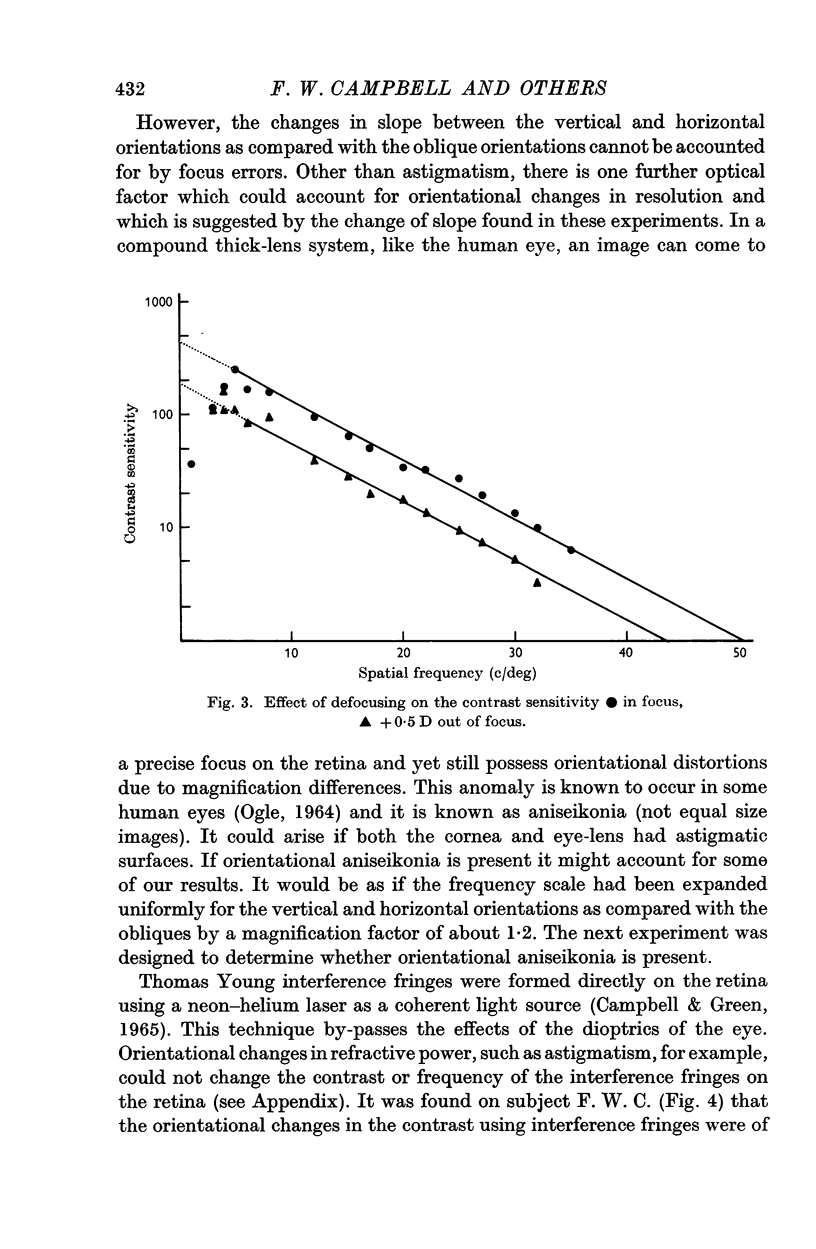
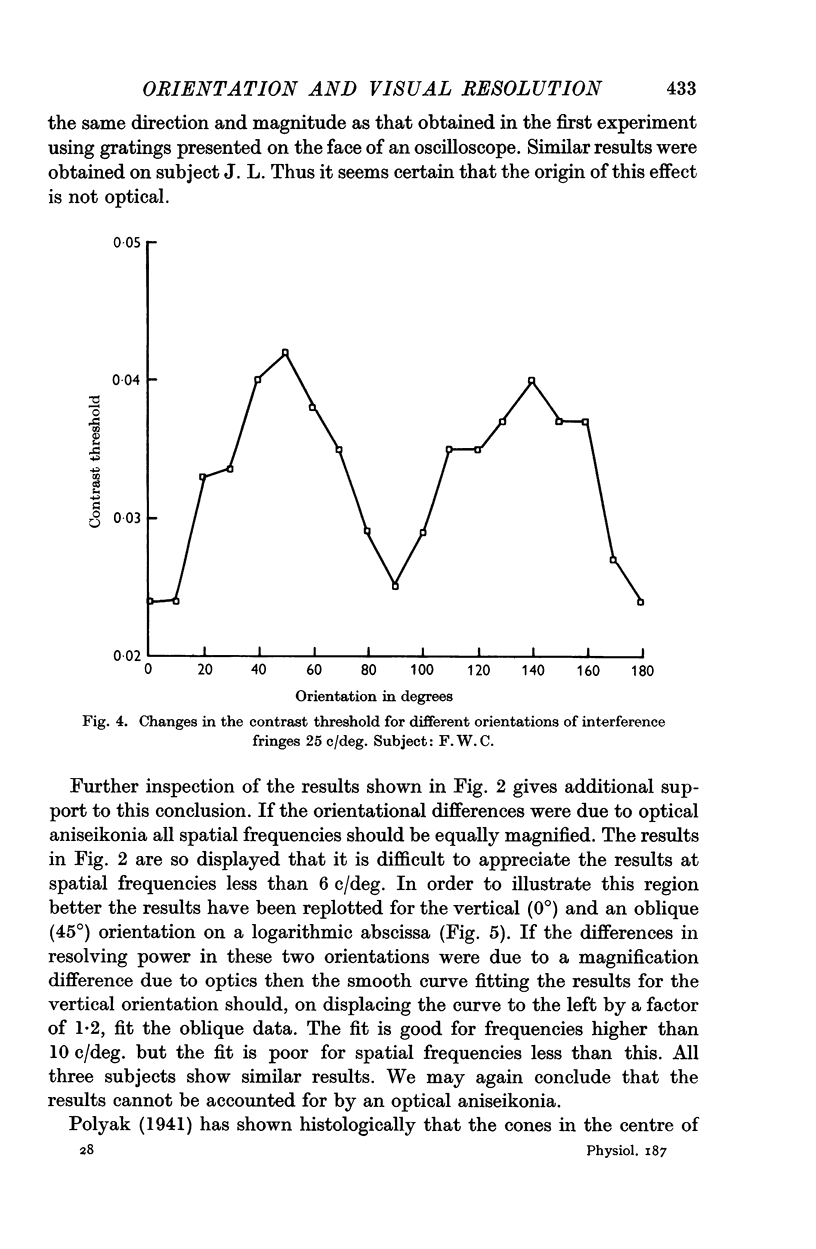
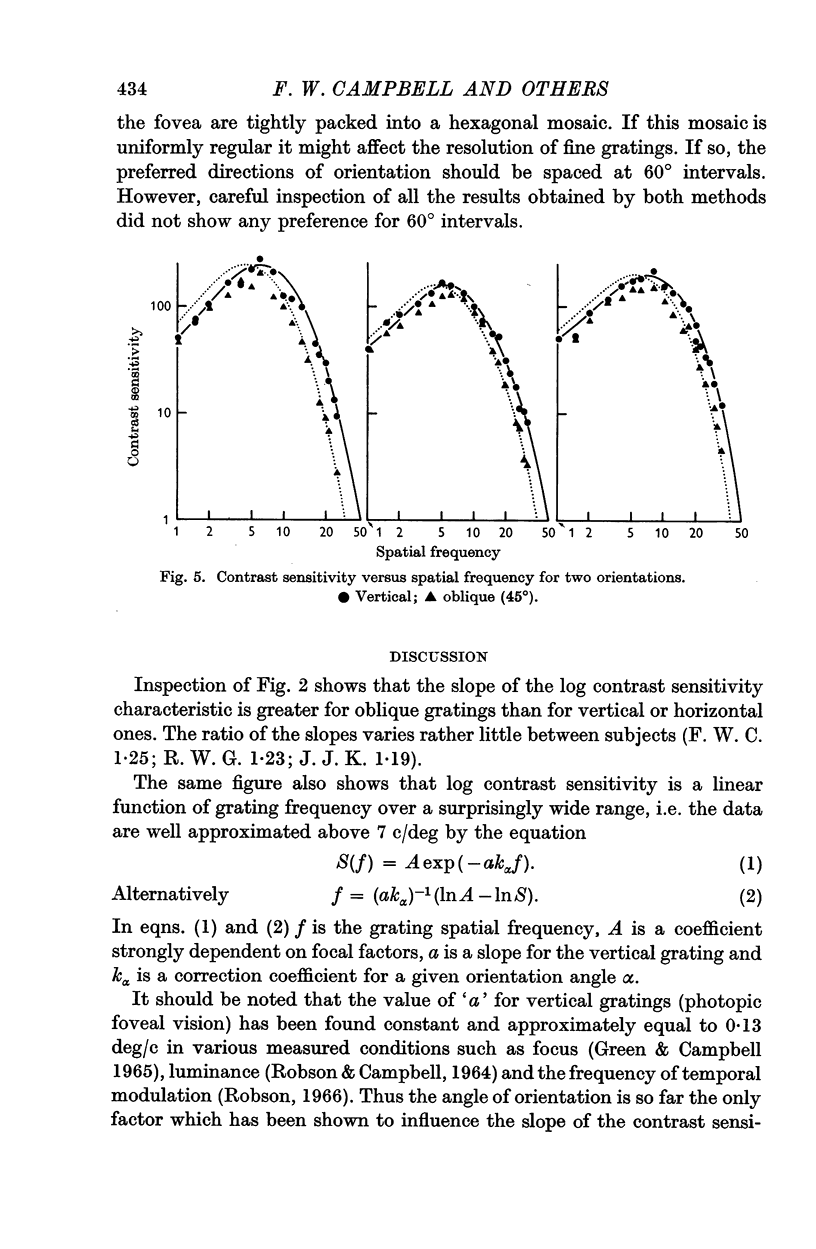
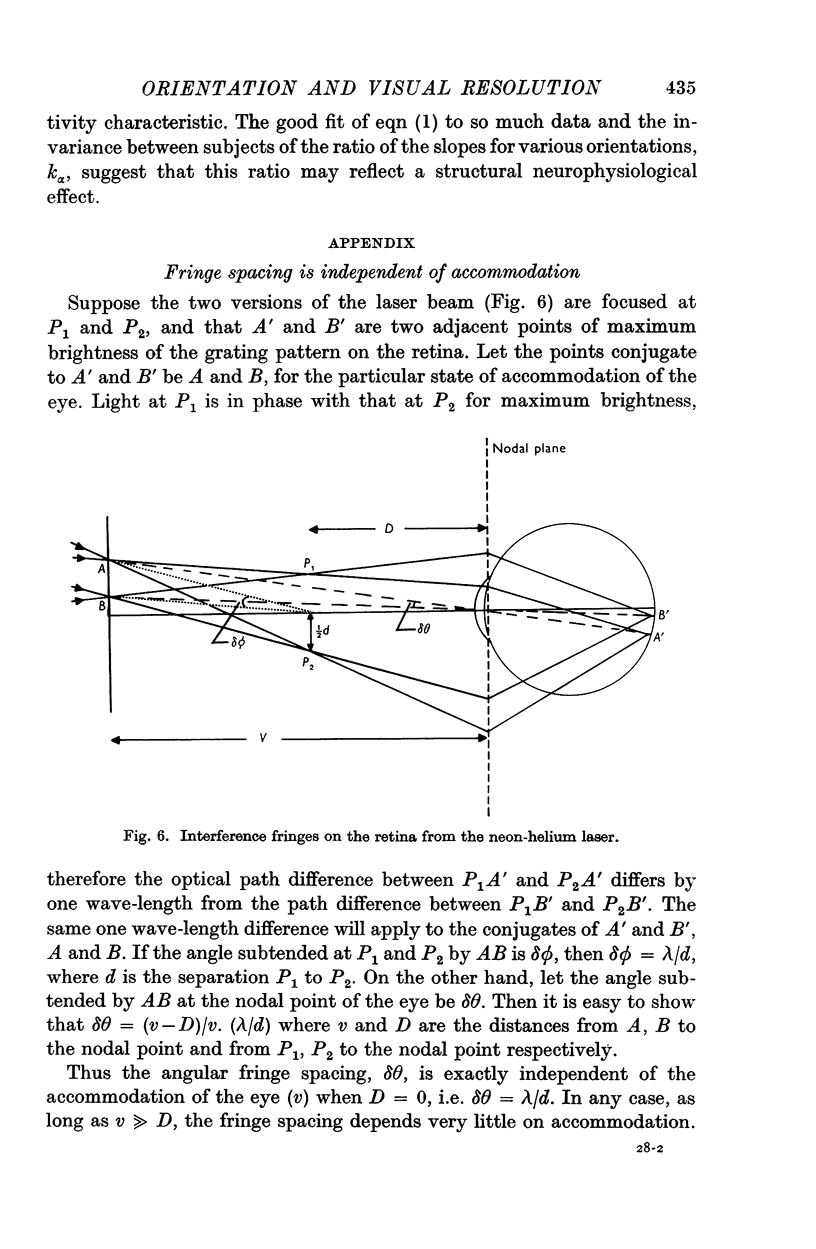
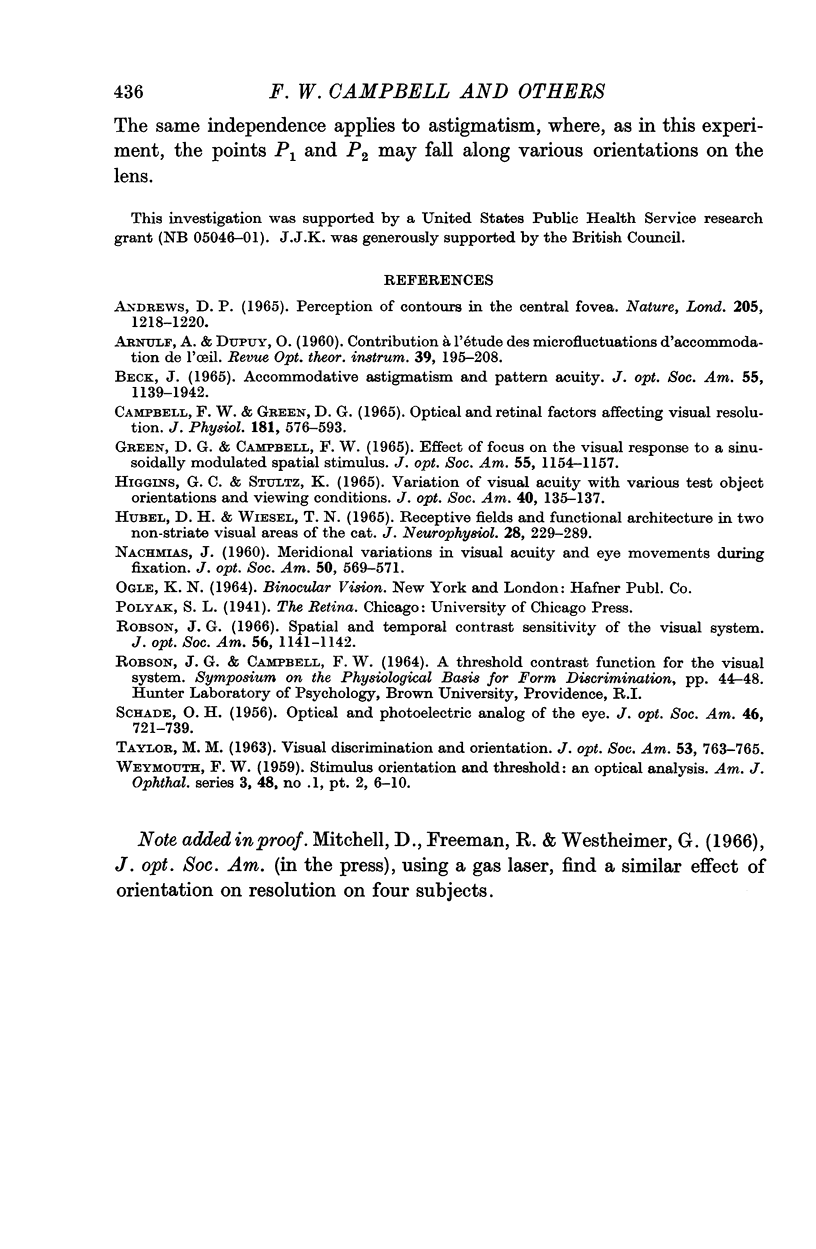
Selected References
These references are in PubMed. This may not be the complete list of references from this article.
- Beck J. Accommodative astigmatism and patten acuity. J Opt Soc Am. 1965 Sep;55(9):1139–1142. doi: 10.1364/josa.55.001139. [DOI] [PubMed] [Google Scholar]
- Campbell F. W., Green D. G. Optical and retinal factors affecting visual resolution. J Physiol. 1965 Dec;181(3):576–593. doi: 10.1113/jphysiol.1965.sp007784. [DOI] [PMC free article] [PubMed] [Google Scholar]
- HUBEL D. H., WIESEL T. N. RECEPTIVE FIELDS AND FUNCTIONAL ARCHITECTURE IN TWO NONSTRIATE VISUAL AREAS (18 AND 19) OF THE CAT. J Neurophysiol. 1965 Mar;28:229–289. doi: 10.1152/jn.1965.28.2.229. [DOI] [PubMed] [Google Scholar]
- NACHMIAS J. Meridional variations in visual acuity and eye movements during fixation. J Opt Soc Am. 1960 Jun;50:569–571. doi: 10.1364/josa.50.000569. [DOI] [PubMed] [Google Scholar]
- SCHADE O. H., Sr Optical and photoelectric analog of the eye. J Opt Soc Am. 1956 Sep;46(9):721–739. doi: 10.1364/josa.46.000721. [DOI] [PubMed] [Google Scholar]
- TAYLOR M. M. Visual discrimination and orientation. J Opt Soc Am. 1963 Jun;53:763–765. doi: 10.1364/josa.53.000763. [DOI] [PubMed] [Google Scholar]


